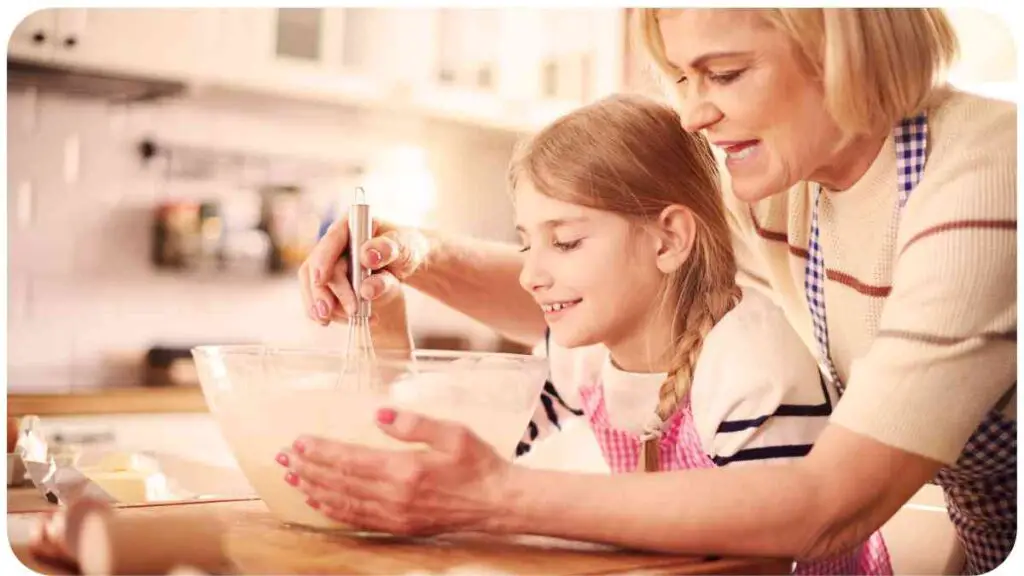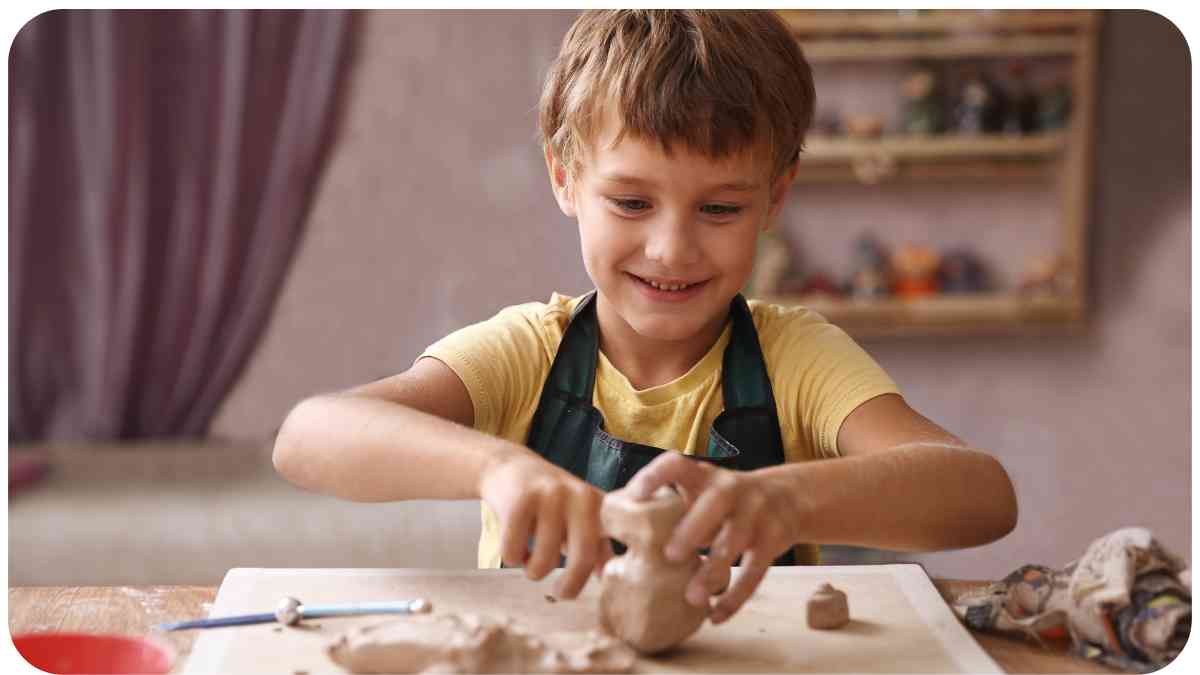Grief is a complex and difficult emotion to navigate, and finding ways to cope with it can be challenging. Art therapy offers a unique and effective approach to processing grief, allowing individuals to express their emotions and thoughts through creativity and symbolism.
In this guide, we will explore the power of art therapy as a tool for healing and growth in the face of loss. Throughout this article, you can expect valuable insights, personal anecdotes, and practical tips to help you harness the benefits of art therapy in your grief journey.
| Takeaway |
|---|
| Art therapy supplies such as drawing paper, paints, and clay are essential for art therapy sessions. |
| Creating a dedicated space for art therapy sessions promotes a calm and comfortable environment. |
| Different art therapy techniques like painting, collage making, and sculpting can be used to express and process grief. |
| Art therapy exercises, such as memory collages and emotional release painting, can aid in healing and emotional expression. |
| Through art therapy, individuals can understand and navigate their emotions in a creative and meaningful way. |
| Further reading resources provide additional information on art therapy supplies and exercises for those interested in delving deeper. |
How Does Art Therapy Help in Grieving Process?
Art therapy serves as a powerful outlet for processing and exploring the emotions associated with grief. By engaging in creative expression, individuals can tap into their subconscious and communicate parts of their grief that may be challenging to express verbally.
The act of creating art allows for a deeply personal and cathartic experience, enabling individuals to find solace and release through artistic exploration.
By externalizing their emotions, individuals can gain a new perspective on their grief, uncovering hidden feelings and insights. The transformative nature of art therapy provides an avenue for self-reflection and healing, allowing individuals to work through their grief in a supportive and non-judgmental environment.
Grieving can be overwhelming, but with a strong support system, healing becomes possible. Embrace the power of community and share your feelings openly, as it helps in the recovery process.” Support System can truly make a difference.
The Science Behind Art Therapy and Grief

Art therapy has been widely studied and recognized for its therapeutic benefits. Research suggests that engaging in art-making activates neurological pathways that enhance emotional processing, cognitive functions, and overall well-being. The creative process of art-making can activate the prefrontal cortex, facilitating emotional regulation and insight, while also reducing stress levels.
Furthermore, art therapy supports the integration of the left and right hemispheres of the brain, stimulating both logical thinking and emotional processing. This integration is particularly valuable for individuals experiencing grief, as it allows for a more holistic exploration and understanding of their emotions.
Getting Started with Art Therapy for Grief
Before delving into the various art therapy techniques and exercises for grief, it’s important to prepare yourself with the essential art supplies. Here are the basic supplies you’ll need to get started:
Table 1: Essential Art Supplies for Art Therapy
| Art Supplies | Description |
| Drawing paper | Thick, acid-free paper that can handle various mediums |
| Colored pencils | Wide range of colors for detailed artwork |
| Acrylic paints | Assortment with primary colors for vibrant paintings |
| Paintbrushes | Different brush sizes for various techniques |
| Clay | Soft and pliable clay for sculpting |
| Scissors | For cutting and shaping paper and other materials |
| Glue | Adhesive for collage-making |
| Markers | Different types (fine-tip, broad-tip) for outlining and coloring |
| Watercolor set | Palette with a range of watercolor paints |
| Sketchbook | Portable book for sketches and doodles |
| Pastels | Soft and blendable chalk pastels for smudging and blending |
| Easel | Standing support for comfortable painting |
| Palette | Surface for mixing and blending colors |
| Charcoal | Versatile drawing tool for shading and creating depth |
| Canvas | Sturdy surface for painting with acrylic or oil paints |
| Fixative | Spray to protect finished artwork from smudging |
Creating a dedicated space for your art therapy sessions is essential. It should be a calm and comfortable environment where you can fully immerse yourself in the creative process. Consider the following aspects when setting up your art therapy space:
- Lighting: Ensure you have adequate lighting that is gentle and diffused. Natural light is ideal, but if that’s not possible, use soft lighting options such as lamps or adjustable light fixtures.
- Privacy: Find a quiet space where you can have some privacy and uninterrupted time for your art therapy sessions. This allows you to focus inward and fully engage with your emotions.
- Comfort: Choose a comfortable chair or cushion where you can sit for extended periods without discomfort. It’s important to have physical comfort to fully immerse yourself in the art-making process.
- Organization: Keep your art supplies neatly organized and easily accessible. This helps create a harmonious and inviting space that fosters creativity.
By creating a designated art therapy space with the necessary supplies, you’ll be ready to dive into the transformative world of art therapy for grief.
“During times of grief, having a reliable support system can provide solace and comfort. Surround yourself with caring individuals who listen and understand, helping you cope with the pain.” Caring Individuals can be a source of strength.
Exploring Different Art Therapy Techniques for Grief
Art therapy offers a wide range of techniques that you can explore to express and process your grief. Each technique brings its own unique benefits and can be adapted to suit your personal preferences and comfort level. Let’s take a look at some popular art therapy techniques for grief:
Collage Making
Collage making is a versatile technique that involves creating a visual composition using various materials such as photographs, magazine cutouts, fabric, and textures. Through collage making, you can explore different themes related to your grief and create a symbolic representation of your emotions. By selecting and arranging different elements, the process allows for self-expression, reflection, and storytelling.
Painting and Drawing
Painting and drawing are classic art therapy techniques that offer a cathartic outlet for grief. With painting, you can use vibrant colors and various brushstrokes to express your emotions. Drawing allows for intricate details and can be used to create symbolic imagery that represents your journey through grief.
Both techniques enable you to externalize and process your emotions visually, offering a tangible representation of your inner experiences.
Sculpting and Clay Work

Sculpting and working with clay provide a tactile and hands-on approach to art therapy for grief. Using your hands to mold, shape, and manipulate clay can be incredibly therapeutic.
Through sculpting, you can create physical representations of emotions, memories, or even individuals who played a significant role in your grief journey. The process of sculpting encourages sensory engagement and allows for a deep exploration of the grieving process.
“Building a supportive network after loss is essential for healing. Learn practical tips and strategies to create connections with others going through similar experiences, fostering a sense of belonging.”
Writing and Journaling
Writing and journaling form an essential part of art therapy for grief. Through written expression, you can delve into your emotions, thoughts, and reflections. Consider keeping a grief journal where you can write freely without fear of judgment or censorship. Allow yourself to explore your grief through words and uncover insights that may guide your healing process.
Photography and Visual Expression
Photography can serve as a powerful tool for capturing moments, emotions, and the experiences associated with grief. Whether using a professional camera or a smartphone, photography allows you to visually document your grief journey and express your emotions through visual storytelling.
You can experiment with different angles, lighting, and subjects to convey specific feelings or capture significant moments relevant to your grief.
By exploring these different art therapy techniques, you can find the methods that resonate most with you and align with your personal style of expression. Remember, each technique is unique, and you have the freedom to combine and adapt them to suit your individual needs and preferences.
Table 2: Practical Applications of Art Therapy Techniques for Grief
| Art Therapy Technique | Practical Application |
| Collage Making | Explore themes of loss, create a visual narrative of your grief journey |
| Painting and Drawing | Express emotions through colors and brushstrokes |
| Sculpting and Clay Work | Create physical representations of emotions and memories |
| Writing and Journaling | Delve into emotions, thoughts, and reflections through written expression |
| Photography and Visual Expression | Capture moments and visually document your grief journey |
Each of these art therapy techniques offers a unique way to engage with your grief and process your emotions. Feel free to experiment with different techniques and find the ones that resonate with you the most. Now, let’s delve deeper into understanding emotions through art.
Understanding Emotions through Art
Art therapy allows individuals to explore and understand their emotions in unique ways. Through the artistic process, you can gain insight into your feelings and find healing and growth. Let’s take a closer look at some common emotions experienced during grief and how art therapy can help:
“Self-care is crucial in the journey of grief recovery. Prioritize your well-being and mental health, exploring various self-care practices that can ease your pain and foster healing.”
Expressing and Processing Anger
Anger is a natural and common emotion experienced during the grieving process. Art therapy provides a safe space to channel and express anger constructively. Through art, you can release pent-up anger and explore its underlying causes.
Consider using bold colors, strong brushstrokes, or vigorous sculpting techniques to externalize and process your anger. Allow the creative process to help you transform and redirect the intensity of this emotion toward healing.
Dealing with Sadness and Loss
Sadness and loss are at the heart of the grieving process. Art therapy offers a means to express and confront these emotions. Whether through somber tones, gentle brushstrokes, or delicate imagery, art allows you to give shape, texture, and form to your grief. By visually representing your sadness and loss, you create a tangible connection to your emotions, fostering understanding and acceptance.
Finding Hope and Resilience
Grief can often overshadow feelings of hope, but art therapy can serve as a powerful tool for restoring a sense of optimism and resilience. Through art, you can explore and cultivate positive emotions, such as hope, love, and strength.
While engaging with art therapy, consider incorporating vibrant colors, uplifting imagery, or creating artwork that reflects moments of hope and resilience in your grief journey. By focusing on these aspects, you can foster a sense of empowerment and growth.
Art therapy provides a space for authentic expression, allowing you to explore the full range of emotions associated with grief. Remember to be patient with yourself and embrace the process as you navigate through these emotions.
Art Therapy Exercises for Healing
Art therapy exercises are designed to promote healing and facilitate emotional expression. These exercises can be customized to meet your specific needs and preferences. Here are a few art therapy exercises tailored for grief:
Memory Collage
Create a collage using photographs, mementos, and other materials that remind you of your loved one or significant moments associated with your grief. Arrange and glue the items onto a canvas or poster board, allowing yourself to reflect on the memories as you create the collage. This exercise offers an opportunity to honor and remember your loved one while acknowledging the impact of their loss.
“Mindfulness can be a powerful tool for coping with grief. Engage in mindfulness exercises to stay present, acknowledge your emotions, and gradually find peace amidst the pain.”
Emotional Release Painting
Choose a canvas or large sheet of paper and express your feelings through bold and expressive brushstrokes or finger painting. Allow yourself to fully immerse in the process, giving voice to your emotions. Make use of colors, patterns, and textures that reflect your inner landscape. This exercise can help release pent-up emotions and provide a sense of catharsis.
Memorial Sculpture
Sculpt a memorial piece using clay or other sculpting materials. Create a tangible representation of your loved one or symbolize your grief journey. Sculpting allows for a tactile and immersive experience that can aid in processing emotions and commemorating your loved one’s memory.
Narrative Writing
Set aside time for reflective writing about your grief journey. Use prompts or journaling exercises to explore the emotions, thoughts, and memories associated with your loss. This exercise encourages self-reflection and can provide clarity and understanding as you navigate through your grief.
Transformational Photography
Take a series of photographs that symbolically represent your personal growth and transformation throughout your grief journey. Capture images that reflect change, resilience, or moments of healing. This exercise allows you to visually document your progress and find strength in the process of transformation.
These art therapy exercises are intended to serve as starting points. Feel free to adapt and personalize them to suit your unique needs and preferences. Engaging in these exercises regularly can help promote healing and provide a tangible outlet for your grief.
Conclusion
Art therapy can be a powerful tool for healing and processing grief. By utilizing essential art supplies and exploring different art therapy techniques, you can engage with your emotions in a creative and meaningful way. Remember to create a dedicated space for your art therapy sessions, ensuring it is comfortable and conducive to self-expression.
Art therapy exercises such as collage making, painting, sculpting, writing, and photography can help you express and understand your emotions, cope with anger and sadness, and find hope and resilience. These exercises can be customized to suit your individual needs and preferences.
Through art therapy, you have the opportunity to explore and navigate your grief journey in a supportive and therapeutic manner. Embrace the process, be patient with yourself, and allow art to facilitate healing, growth, and self-discovery.
Further Reading
Here are some additional resources related to art therapy supplies and exercises:
Creative Therapy Ideas – Art Therapy Supplies: This website provides an overview of essential art therapy supplies, including a list and description of various materials used in art therapy sessions.
Art Therapy Resources – Art Therapy Supplies Kit: Explore this website to find information on art therapy supplies kits, their contents, and their uses in therapeutic art activities.
Essential Art Therapy Exercises by Leah Guzman: This book offers a collection of art therapy exercises designed to address a variety of emotional and mental health concerns. It provides practical guidance and step-by-step instructions for implementing these exercises.
FAQs
What is art therapy?
Art therapy is a form of therapy that uses artistic expression as a means of communication and healing. It combines elements of psychology and creative arts to promote self-expression, emotional processing, and personal growth.
Who can benefit from art therapy?
Art therapy can benefit individuals of all ages and backgrounds. It is especially helpful for those experiencing grief, trauma, anxiety, depression, or any emotional or psychological challenges.
Do I need to be an artist to engage in art therapy?
No, you do not need to have any prior artistic skills or experience to engage in art therapy. The focus is on the process of self-expression and exploration, rather than the final artistic product.
Can art therapy be done individually or in a group setting?
Art therapy can be conducted in individual or group settings, depending on personal preferences and therapeutic goals. Both formats offer unique benefits, so it’s important to choose the setting that feels most comfortable and supportive for you.
How does art therapy help with grief?
Art therapy provides a creative outlet for expressing and processing grief. It allows individuals to externalize their emotions, explore their experiences visually, and find healing through the art-making process. It can facilitate understanding, provide a sense of release, and offer a path towards healing and growth.

My name is Hellen James. I’m a grief and loss recovery expert who has helped people across the country to move beyond their grief and move forward with their lives.


